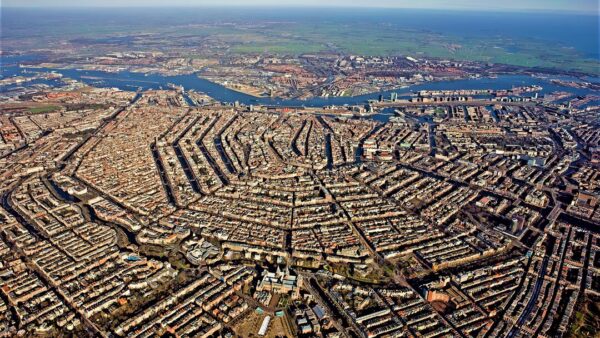Government ministers have nixed the vision of the UK leading the world on tidal power with six lagoons built around its coastline that use the retreating tide to spin turbines.
To marked disappointment expressed across the political spectrum in Wales, business and energy secretary Greg Clark finally told Parliament yesterday (25 June) that government would not finance the first of these lagoons, a £1.3bn scheme proposed for Swansea Bay that would have entailed building a six-mile-long horseshoe-shaped seawall dotted with 16 underwater turbines.
Clark told MPs that this, a world first, and the others would not represent value for money compared to a mix of offshore wind and nuclear.
Such an analysis would factor in the price government guaranteed to pay per unit of electricity generated by the lagoons – known as the Contract for Difference (CfD), or “strike price” – and the strike price formula proposed by the developer, Tidal Lagoon Power (TLP), has dropped over time in response to government concerns.
TLP protested yesterday that ministers had frozen it out of deliberations. So far, TLP has spent £35m on developing the 320MW plan.
“In light of today’s statement and having heard next to nothing from government for two years, the board will be meeting in two days’ time to consider its next steps,” said TLP chairman Keith Clarke.
At the beginning of 2017 a review commissioned by the government, and led by former energy minister Charles Hendry, backed the Swansea Bay lagoon as a pathfinder for five others proposed by TLP, but yesterday Greg Clark set out ministers’ reasoning.
“The same power generated by the lagoon, over 60 years, for £1.3 billion, would cost around £400 million for offshore wind even at today’s prices, which have fallen rapidly, and we expect to be cheaper still in future,” Clark’s speech read.
He said that at £1.3bn, the capital cost per unit of electricity generated each year would be three times more than that of the under-construction Hinkley Point C nuclear power station.
“If a full programme of six lagoons were constructed, the Hendry Review found that the cost would be more than £50 billion, and be 2 and a half times the cost of Hinkley to generate a similar output of electricity,” Clark told MPs.
Offshore wind would be better, he said, because it would cost at least £31.5bn less to build enough turbines to match the generating capacity of the six lagoons.
“Taking all the costs together, I have been advised by analysts that, by 2050, the proposal that has been made – which would generate around 30 TWh per year of electricity – could cost up to £20 billion more to produce compared to generating that same electricity through a mix of offshore wind and nuclear, once financing, operating, and system costs have been taken into account,” Clark said.
“That could cost the average British household consumer up to an additional £700 between 2031 and 2050, or the equivalent of £15,000 for every household in Wales.”
Clark said the Swansea lagoon would employ only 28 people full time when operational, and that, in terms of constancy of generation, tidal had poorer prospects than wind or nuclear.
“The inescapable conclusion of an extensive analysis is that however novel and appealing the proposal that has been made is, even with these factors taken into account, the costs that would be incurred by consumers and taxpayers would be so much higher than alternative sources of low carbon power, that it would be irresponsible to enter into a contract with the provider.”
- See the value-for-money assessment here.
After yesterday’s statement, Wales’ First Minister Carwyn Jones tweeted that the decision was “short-sighted”, and called it a “crushing blow to Wales”.
TLP chief executive Mark Shorrock told the BBC that the figures were wrong, and said offshore wind projects had received £8bn in subsidies and the Swansea pathfinder lagoon needed just £25m a year “in order to kick start an industry”.
“It’s a very, very sad day for Wales, for Swansea,” he told BBC Radio Wales’ Good Evening Wales programme.
Review author Charles Hendry said the decision was disappointing, and could have been made 18 months ago.
A source earlier this month told The Financial Times that the decision had been made in May, but ministers had been deliberating over how to soften the blow with support for other low-carbon schemes in Wales.
Yesterday clark told MPs that his department had received proposals for cheaper tidal power schemes, but they were in “earlier stages of development”.
Image: Aerial view shows layout of the proposed Swansea Bay tidal lagoon (Tidal Lagoon Power)
Further Reading:
Comments
Comments are closed.







This was always a poor option, and while the reasoning of the Westminster government, taken in train with all its other energy ‘policies’, makes no more sense than they do, the decision not to proceed is the right one. The time of the mega-project is over; they make too much of a mess of everything. In this case it would have been Swansea Bay. Of which I am, strangely enough, rather fond. I go to see it about once a week, and am always charmed by how little it is appreciated in all its moods. The lagoon would have been a death knell for the sweep of golden sand.
However, the reasoning was based on a series of half-truths as to the cost, and a complete blank out of nuclear’s total lack of sustainability (and cost). Yes, offshore wind costs less money (but is not necessarily cheaper), but what we need is some means of storing renewables, and a grid that is optimised for renewables , not more we have no option but to waste. It would be nice if politicians understood this basic principle, not competed to shout loudly about pet projects (in approval or disapproval) they don’t really appear to understand the full consequences of.